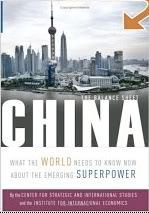Asia's river systems face collapse
Mar 24, 2007
By Alan Boyd
Water in the Indus River is so clouded that the native dolphin has in effect lost its eyesight and has to detect prey and other objects through sound waves.
More than half of all the industrial waste and sewage in China flows into a single waterway, the Yangtze. And tributaries of the Ganges, one of Asia's greatest cultural and religious treasures, are running dry because of the crippling burden of irrigation.
Such has been the legacy of the frantic Third World rush to industrialize at any cost, according to a landmark study by the World Wide Fund for Nature (WWF) that was released as part of World Water Day on Thursday.
It found that 21 of the world's greatest rivers, including the Yangtze, Mekong, Salween, Ganges, Indus and Tigris-Euphrates in Asia, were struggling to survive against the tide of man-made pollution and the diversion of water through dams, pipes and irrigation.
"We're talking about a complete collapse of the system - they're so polluted, so over-extracted or so cut up by dams that it's really not functioning as a river anymore," said Tom Le Quesne, freshwater-policy officer at WWF. "It's a challenge that humanity faces not far off the scale of climate change."
So many lives depend on these river systems that the economies of emerging Asia could be ravaged and there could be immense social upheaval, including the loss of food security and employment. About 450 million people draw water, food and electricity supplies from the Yangtze alone, while many more use it for transportation.
The Mekong River basin supports 60 million people, including parts of China, Myanmar and Vietnam, nearly one-third of Thailand and most of Cambodia and Laos. It supplies two of the world's most important rice bowls, central Thailand and the delta region of southern Vietnam.
In India, the Ganges Plain comprises one-third of the country's land area and 120 million people rely on its waters for fishing and farming. Tens of millions live on tributaries of the Ganges in Bangladesh.
Then there are the displacements forced by development, often involuntary. The World Commission on Dams (WCD) has estimated that between 40 million and 80 million people have been resettled, including at least 10 million in China.
As habitats are progressively destroyed, the ecological toll is mounting and may be irreversible. About 20% of the world's 10,000 freshwater fish and plant species are either extinct or endangered.
In the Yangtze, the freshwater dolphin was declared officially extinct last year and the Chinese alligator, baiji (river dolphin) and freshwater finless porpoise are critically endangered. Other dolphins are at risk in the Salween basin, Ganges and Indus.
Hundreds of fish species have vanished, especially species that have found their annual migration patterns blocked by dams. Giant catfish, one of the world's largest freshwater fish, have not been caught in the Mekong in northern Thailand since 2001.
As the species decline, so do livelihoods. Annual fish catches from the middle and lower Yangtze averaged around 240,000 tonnes in the early 1950s, but were down to 110,000 tonnes when the last checks were taken, in the period 1983-2000.
The WWF puts the blame for the deterioration of river systems on overdevelopment, noting that at least 60% of the world's 227 largest rivers have been fragmented by dams, leading to the destruction of wetlands.
On a global scale, more than 45,000 large dams - those that are more than 60 meters high - are operational in more than 150 countries, while another 1,500 or so are under construction.
"Unabated development is jeopardizing nature's ability to meet our growing demands," said Jamie Pittock, who heads the WWF's freshwater program.
The report is a follow-up to a study by the WCD in 2000 that recommended more stringent controls on the blocking of water flows so that the environmental impact of man-made barriers could be contained. The WFF concludes that governments are not acting on these recommendations.
Most at risk is the Yangtze, which also has the largest number of large dams either planned or under construction - 46, including the mammoth Three Gorges.
Communities along river systems add to the problem. Pollution in the main stem of the Yangtze has increased by more than 70% during the past 50 years, with heaps of garbage, pig waste and discharge from factories, hospitals and mines, possibly including radioactive waste, accumulating on the riverbed.
Leather-processing industries that use large quantities of chromium and other metals are feeding toxic waste into the Ganges, especially near Kanpour, while about a billion liters of mostly untreated raw sewage spills in daily.
The extraction of water for irrigation and runoff of chemicals from factories and farms threaten the Indus, which snakes through Pakistan and western India. Meanwhile logging, poor farming practices and the destruction of mangroves are putting the Mekong at risk.
Governments are waking up to the threat to their river systems, but there are inevitable economic and political trade-offs. India's localized Ganga Action Plan for the Ganges, which is building a chain of waste-treatment plants, has had little backing from the leading political parties because of the perceived threat to industry, and it barely registers with religious authorities.
Chinese officials have promised their neighbors on the Mekong that Beijing will "fully consider" the environmental consequences of tapping water from the river, which is known in China as the Lancang. Yet China refuses to join monitoring efforts by the Mekong River Commission.
The WWF and other environment agencies have acknowledged that policymakers face a difficult choice between development goals and ecosystems as they battle to raise living standards. Under the Millennium Accord brokered by the United Nations in 2000, the countries of the world agreed to halve the proportion of those without access to affordable and safe drinking water and basic sanitation by 2015.
Poor countries pledged to govern with greater effectiveness and to invest their resources more wisely. Rich countries committed to support them through increased aid and debt relief, among other things.
Much of this aid has been channeled into big-money water-infrastructure projects with the backing of the World Bank, the Asian Development Bank and other lending institutions, usually with multinational conglomerates from the richer nations as project partners.
Small countries such as Laos and Myanmar stand to make a financial windfall. For Laos, one of the most backward countries in Asia, the planned investment of more than US$1 billion in the contentious Nam Theun II Dam will be equivalent to three times its national budget.
But the WWF report contends that the benefits are often overstated, as most returns go to the offshore partners, while local communities face dislocation and the potential loss of livelihoods.
"Dams are both a blessing and a curse - the benefits they provide often come at high environmental and social costs," said Dr Ute Collier, head of the WWF's Dams Initiative. "Those most affected by dams rarely benefit from them or gain access to power and clean water."
According to studies by the WCD and the UN, the dams contribute water to only 12-16% of world food production, even though half were built specifically for the irrigation of crops and an estimated 30-40% of the 271 million hectares of irrigated land worldwide relies on dams.
This is because irrigation is notoriously inefficient: on average, it utilizes only 38% of water discharges and up to 1,500 trillion liters of water is wasted annually, enough to supply the whole of the African continent.
Likewise, there are arguments against the capital investment needed for the 19% of dam capacity that is used to supply power to electricity grids, even though it offers relatively low greenhouse emissions.
UN studies have found that every megawatt of installed capacity for hydropower costs about $1 million, while the bulk of output is often exported for hard currency rather than being offered to local populations.
Nevertheless, the WWF concedes that "there is little doubt that dams have improved agricultural output by making more land suitable for cropping through irrigation", while also piping drinking water and providing valuable benefits for flood mitigation. The central argument, the agency says, is how to build dams in a less intrusive manner that will sustain water systems and their habitats. So far the message is getting through only in developed countries: the United States is actually dismantling some of its dams.
But as water resources dwindle, it is likely that the potential for conflict between neighbors who share rivers will force a change of attitude, as the impact of dams and other flow diversions is selective. Communities living downstream from large dams, particularly those that rely on natural floodplains for agricultural, herding and fishery production, suffer the most when structures are built upriver.
China's activities on the upper Mekong are disrupting the navigation of Laotian fishing vessels, disrupting flood patterns for Thai river communities, drying up Tonle Sap lake in Cambodia and aggravating salination problems in Vietnam's delta region.
Management of the glacier belt in the Himalayas affects a whole range of river systems, providing 40% of the water in the Ganges and much of the flow for the Indus, Brahmaputra and Padma and feeding the Red Sea. Pakistan, India and Bangladesh put their trust in Nepal and Tibet.
Internal diversions of water have a similar impact on domestic populations. China plans to pipe water from the Yangtze basin to the Yellow, Huaihe and Haihe river systems more than 1,000km to the north to revive the Yellow River, which is now only a trickle in places.
India is considering 30 separate projects that will link rivers, including the Mahanadi, Godavari, Krishna and Cauvery, as a way of transferring flows, mostly from the north and west to the south.
Le Quesne said attitudes of governments will have to change if the world's river systems are to be saved.
"We've all been used to taking water for granted. We've assumed that water is a limitless resource. It's not anymore," he said.
"It's a question of using water wisely and managing it. It's a question of political will."***
Alan Boyd, now based in Sydney, has reported on Asia for more than two decades.
Link




0 Comments:
Post a Comment
Subscribe to Post Comments [Atom]
<< Home